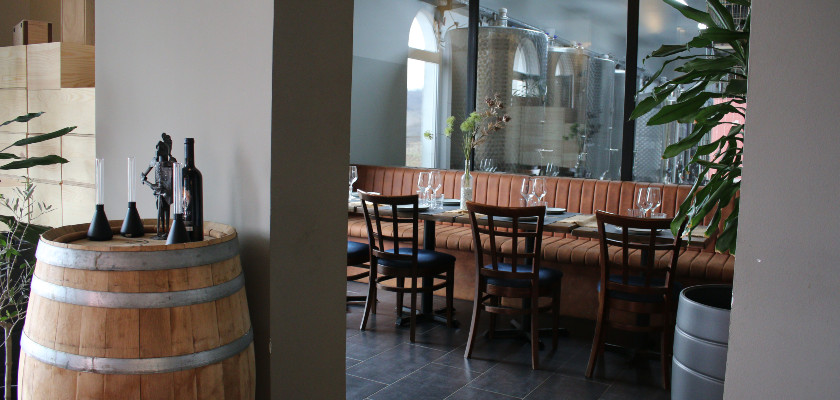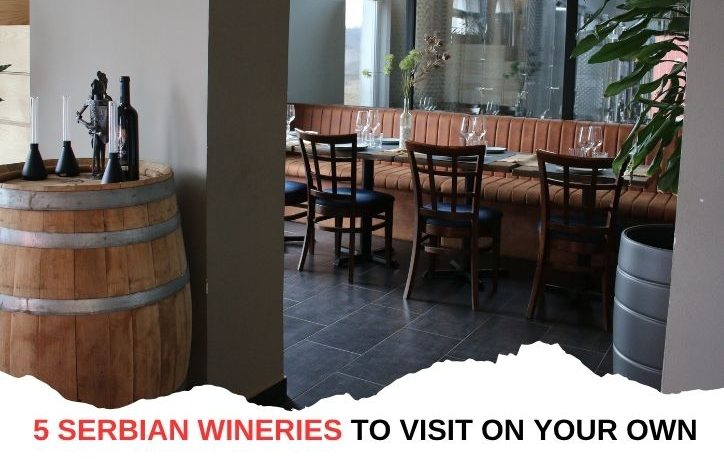
5 Serbian Wineries You Can Visit on Your Own
For travelers looking for authentic, walk-in wine experiences in Serbia
Quick links to the wineries featured in this article:
- 🍷 Aleksandrović Winery – Topola, Šumadija
- 🍷 Despotika Winery – village of Vlaški Do, Šumadija
- 🍷 Imperator & Salaxia Winery – Rakovac, Fruška Gora
- 🍷 Kalča Winery – village of Kalča near Niš, South Serbia
- 🍷 Matalj Winery – Negotin, East Serbia (Timok region)
Serbia’s Wine Map: 9 Regions and a Young Wine Tourism Scene
Serbia’s wine story stretches back to Roman times, and today the country officially recognizes nine wine regions: Šumadija, Fruška Gora (Srem), Bačka, South Banat (Vršac), Timok region with Negotin, Niš (South Serbia), Župa, Vranje, and Kosovo and Metohija. Each has its own microclimate, grape varieties, and approach to winemaking — from continental reds to crisp, mineral whites.
Most travelers start their Serbian journey in Belgrade or Novi Sad and naturally assume that wineries are just around the corner. In reality, the nearest wine estates are at least an hour’s drive away, often along scenic rural roads. There are no true urban wineries in Serbia, and wine regions still keep a rural rhythm of life.
Wine tourism here is still a young discipline. Only a handful of wineries are open to spontaneous visitors, while many others expect pre-arranged groups or operate primarily as restaurants that happen to make wine. Some of the most commercial wineries — like Kovačević, Deurić, or Erdevik — are stylish but restaurant-focused, where the wine experience can easily fade behind menus and background music.
A positive exception is Zvonko Bogdan Winery near Subotica which, despite its scale, offers structured guided tours with proper tastings — a bit formal, perhaps, but still focused on wine rather than lunch service.
Fortunately, several wineries across the country understand what true wine hospitality means — places where you can simply show up, meet real people behind the labels, and enjoy a relaxed tasting without having to book weeks in advance. Here are five of them.
1. Aleksandrović Winery – Topola, Šumadija (open year-round)
The Aleksandrović family revived the royal winemaking tradition once lost after World War II, and today their estate in the heart of Šumadija stands as Serbia’s most recognizable winery. Despite its success and polished image, the team remains welcoming to independent travelers.
Visitors can taste a wide selection of local and international varietals — including the celebrated Trijumf blend — while enjoying panoramic views over the Oplenac vineyards. The tasting room is open throughout the year, and no reservation is required for small groups or individuals.
2. Despotika Winery – village of Vlaški Do, Šumadija (open April–October)
A short drive from Topola, Despotika is both a winery and a small museum of wine culture. The architecture blends traditional motifs with modern lines, and the atmosphere is quietly professional.
Visits are possible from spring to late autumn, and tastings are hosted in an airy hall overlooking the surrounding hills. Despotika’s wines are modern in style, but their approach to visitors feels personal — you’re never rushed, and conversation flows as easily as the wine.
3. Imperator & Salaxia Winery – Rakovac, Fruška Gora (open year-round, with FIG restaurant)
At the foot of Fruška Gora, the twin project of Imperator and Salaxia is one of those pleasant surprises where two passionate winemakers share the same space and vision. Both produce small quantities with distinct personalities — Imperator focusing on full-bodied reds, Salaxia on elegant whites and rosés.
Tastings take place in a cozy setting, often guided by the winemakers themselves, and the adjoining FIG restaurant offers seasonal food without overpowering the wine experience. Open year-round, this is a perfect stop for anyone exploring Fruška Gora independently.
4. Kalča Winery – village of Kalča near Niš, South Serbia (open year-round)
In the quiet hills south of Niš lies Kalča Winery — a family-run estate that reflects the hospitality of southern Serbia. The setup is simple: a modest tasting room, honest wines, and a genuine welcome.
Visitors can drop by almost any time of the year and expect a relaxed, unhurried tasting. Kalča is not a polished tourist spot — and that’s exactly its charm. For those traveling through the south, it’s a chance to see what local winemaking looks like before it becomes commercialized. It’s quite far from Belgrade, but worth the visit if you’re already in the Niš region.
5. Matalj Winery – Negotin, East Serbia (Timok region, open seasonally)
Matalj is the leading name of the Negotin wine region, part of Serbia’s eastern Timok valley. It’s a long drive from Belgrade, but if your route takes you anywhere near the Iron Gates or eastern Serbia, this winery is worth a detour.
Their vineyards stretch across sunlit slopes near the Bulgarian border, and tastings are available in season, usually by simple arrangement on arrival. The style is serious but not pretentious — good wines, clear storytelling, and authentic local pride.
A Few Final Thoughts
If you’re staying in Belgrade, the most practical independent wine route connects Šumadija and Fruška Gora, where several wineries are within a 90-minute drive. Those venturing farther afield — to South or East Serbia — will find fewer options, but also more authenticity and human connection.
Wine tourism in Serbia is still finding its rhythm, but these wineries prove that genuine hospitality doesn’t need marketing gloss. They welcome visitors not because it’s a business model, but because that’s how wine culture is meant to be shared.
If you’d rather have someone local plan your route, make introductions, and take care of logistics, join one of our private wine tours across Serbia — designed for travelers who prefer authenticity over show.
FAQ: Visiting Wineries in Serbia on Your Own
Are there wineries near Belgrade you can visit without a reservation?
Not inside the city. The closest walk-in friendly areas are Šumadija (around Topola) and Fruška Gora, typically 60–90 minutes’ drive. This article highlights wineries that generally welcome independent travelers.
Do Serbian wineries require reservations?
Many do, especially the restaurant-style estates. The five wineries listed here are either open year-round or seasonally for individual visitors, with simple, on-arrival tastings (Despotika is open Apr–Oct). Availability can vary on harvest days and holidays, so a same-day call is still a good idea.
What’s the best route if I’m staying in Belgrade?
Combine Šumadija (Topola area) and Fruška Gora (Rakovac area) for the most efficient day or weekend trip. South Serbia (Kalča) and East Serbia (Matalj, Negotin/Timok) are farther from Belgrade — great if you’re already in those regions.
About the Author
Miljan Miljević is the founder of Serbian Private Tours. Since 2013, he has been curating private wine itineraries across Šumadija, Fruška Gora, and beyond — focusing on small, walk-in friendly wineries and authentic local experiences.

